To a motorcyclist, a motorcycle helmet is an indispensable piece of protective equipment. It protects your head from damage, protects your face from the elements, and helps to keep your concentration fixed on the road. For some motorcyclists, their choice of helmet is even more important than their choice of motorcycle!
The first motorcycle helmet was crafted in 1914. A medical officer by the name of Dr. Eric Gardner noted the nature of injuries sustained by riders at the Brooklands racing circuit in the United Kingdom. An unusually high number of crash victims suffered head injuries and trauma. As a result, Dr. Gardner teamed up with his associate, Mr. Moss, to create a suitable protective helmet.
This early creation was formed using canvas and shellac. It was a basic helmet that could withstand impact and prevent further head trauma in some cases. It was first showcased to the British Auto-Cycle Union in 1914 and received a warm reception. But the humble helmet had a long way to go until it became a widely used and accepted piece of motorcycle gear.
Over the years motorcycle helmets have evolved from these rudimentary helms to expertly engineered protectives, and along the way, a few notable helmets have stopped the press and made people pay attention. Here’s a quick look at some of the most iconic motorcycle helmets of all time.
The Pudding Basin
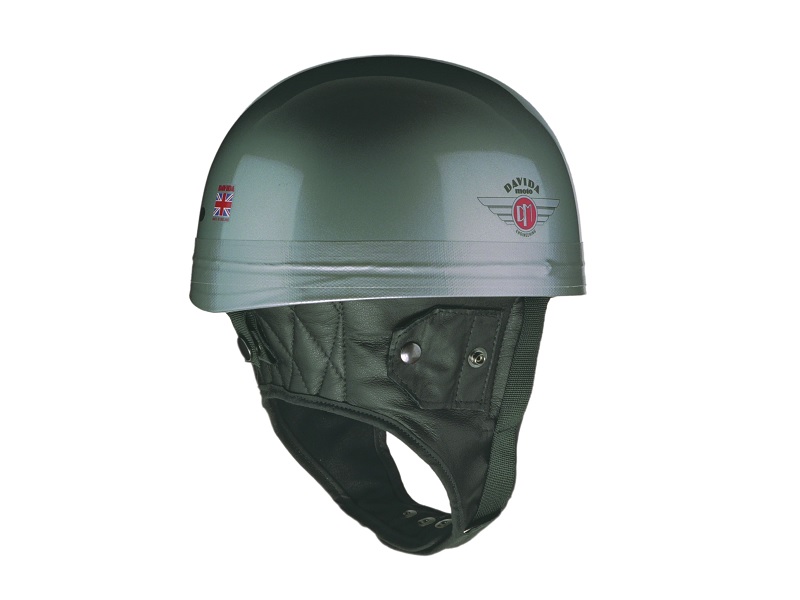
The Pudding Basin, or Shorty helmet, is one of the most iconic helmet types ever made. These scary looking helmets were famously worn by early Grand Prix racers from the mid-40s onwards. As the name suggests, they share a design with a pudding bowl, which riders would wear on their heads. They’re similar in nature to open face helmets, but without the lower section.
They became popular during the 1960s, particularly in the United Kingdom, and were worn by British Rockers and road racers alike. While they don’t offer amazing protection, they can easily accommodate goggles and textile side panels.
Today, they’re not particularly popular. This is largely because they’re not as safe as other products on the market. However, many modern half helms do conform to the minimum legal safety requirements in the US and Great Britain. Still, many professional motorcycling organizations and training centers prohibit their use.
It shouldn’t come as a surprise to learn that there aren’t many traditional Shorty half helmet manufacturers still in business today. British brand Davida is one of the few that continues to fly the pudding basin flag, though most riders prefer to opt for something a little more substantial. They might not be the safest helmets in the world, but these old classics certainly are iconic.
Bell 500
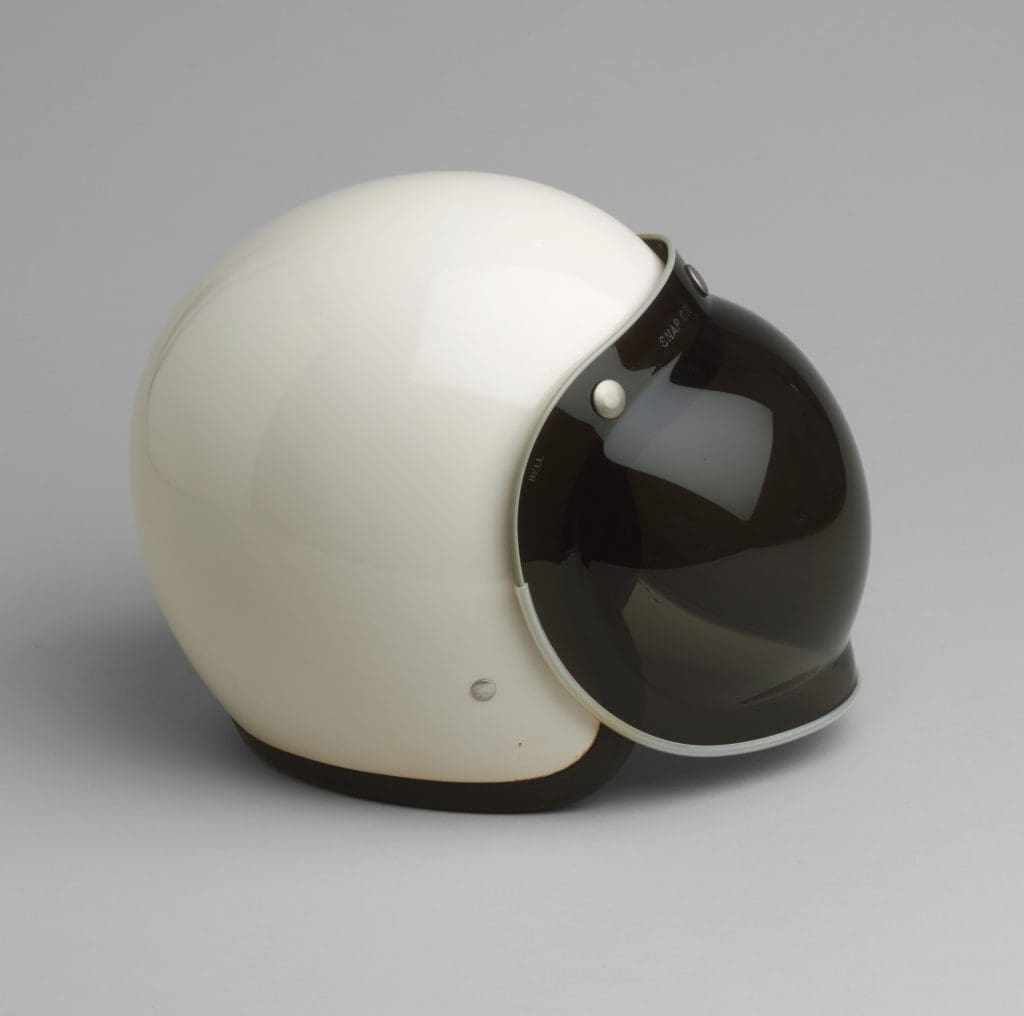
The Bell 500 was a real gamechanger when it was first developed back in 1954. Up until then, the pudding basin was the go-to helmet for racers. Created by Roy Richter, the Bell 500 is what many would describe as the first real motorcycle helmet. Richter, a former race car driver, was inspired to look at track safety after the passing of a close friend, who lost his life in a racing incident. With years of experience trackside, Richter turned his attention to developing suitable safety equipment for these fearless racers.
In 1954, the Bell 500-TK was born. It wasn’t leather, it wasn’t canvas, and it wasn’t shellac. Instead, it used three special layers: a hard fiberglass shell, a foam middle layer, and a comfortable padded inner layer. It took its design cues from the fighter pilot helmets being used by the United States Air Force, and though it was open-face in nature, it set the safety standard for the era and paved the way for the modern motorcycle helmets that we have today.
Not only did it work, but it worked well. The Bell 500 was in high demand, with car and motorcycle racers wanting one of their own, and with law enforcement agencies too. In fact, up to 800 police departments used Bell 500 helmets for their motorcycle divisions. It was already an icon when it arrived on the scene, and that’s why it received the Excellence of Design Award from New York City’s Museum of Modern Art.
It’s an undeniable icon.
Bell Star
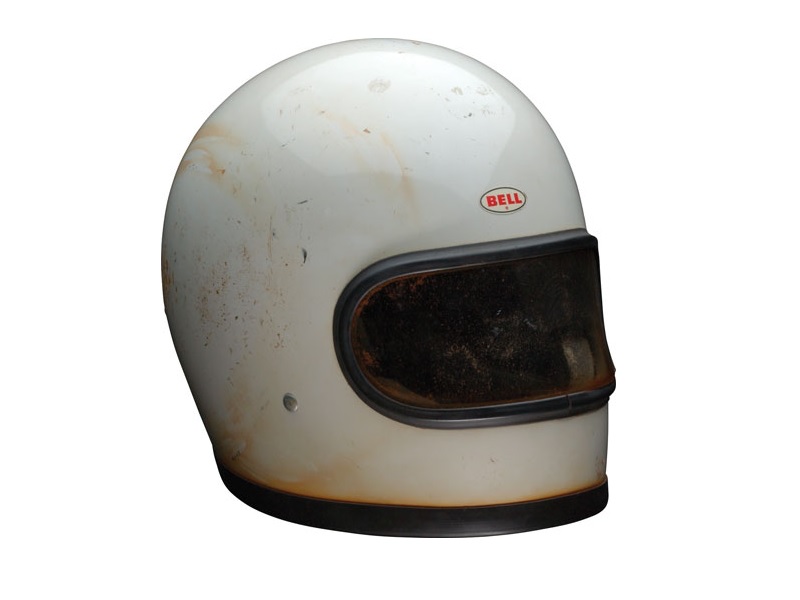
Another design icon of the 20th century was the original Bell Star helmet from Bell Helmets. While the Bell 500 was an absolute success among racers and law enforcement, helmet use among regular riders still wasn’t as high as it should have been. The Bell Star didn’t immediately change their minds either, but it definitely showcased what a helmet could be and what it could do to a wider audience.
This was the first full-face helmet on the market. Arriving on the scene in 1964, the Bell Star was an advanced helmet with an exciting nature. It was high-end, highly-protective (in relative terms), and expensive to boot. Like the Bell 500, it used new engineering methods and innovative technologies. For example, it was a one-piece construction, with a nylon interior, a snap-on visor, and more.
What’s more, the timing and design of the helmet couldn’t have been better. As the USA entered the space age, this modern, astronaut-style helmet couldn’t have hit the market at a better time. What’s more, in 1964, USDOT created the country’s first motorcycle safety standards with new rules about what could be worn on the roads and what couldn’t. Naturally, the Bell Star was approved.
Even better, in 1966 the US Highway Safety Act was passed by Congress. This act made helmet laws mandatory for states if they wanted to receive federal money for highway development projects. This led to a boom in helmet sales. The Bell Star sold well, thanks to celebrity endorsement from the likes of Evel Knievel, and Peter Fonda.
The Bell Star evolved into one of the most significant and influential helmets ever made.
AGV 12 World Champions Charity Helmet
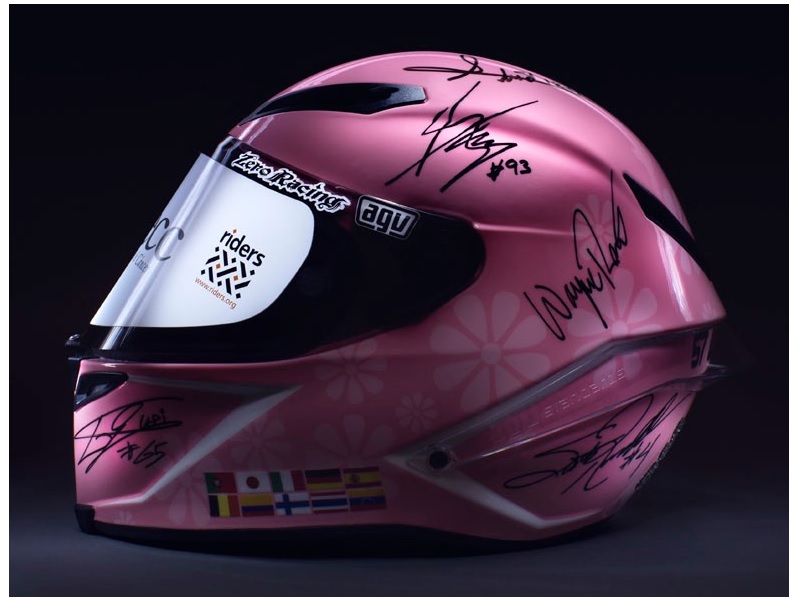
After the Bell Star, and the subsequent law changes and a more positive attitude towards helmets, wearing helmets became more popular. As such, more brands began to appear and develop their own innovations and technologies. Throughout the 70s and 80s, flip-up visors, tinted shields, strategically placed air vents, and different construction methods became commonplace. Riders had an abundance of choice.
With so many excellent manufacturers producing helmets of all types, shapes, and sizes, it’s difficult to find a stand-out icon that sums up the modern era. However, one springs to mind: an AGV model that was auctioned off for charity, that sold for an incredible €255,000 (about $310,000 in USD).
The idea was conceived by Spanish student Alberto Hernandez, who worked with a member of the LCR Honda racing team to collect donations for the AECC (Spanish Association against Cancer) and the Rider for Health organizations, to support charities directly involved with fighting cancer.
Together, they designed a one-off AGV helmet with a pink color scheme and had it signed by no less than 12 premier class riders and champions, including Valentino Rossi, Giacomo Agostini, Angel Nieto, Dani Pedrosa, Loris Capirossi, Jorge Lorenzo, Wayne Gardner, Randy Mamola, Scott Russell, and Àlex Crivillé. With such a star-studded autograph list and an even more admirable cause, it’s no wonder that it sold for such a high amount.
While it’s not necessarily an icon in its own right, this incredible AGV helmet shows off how far helmets have evolved from the 1970s to the present day. But what about the future? What helmets around today will go down in history as pioneering icons?
Skully AR-1
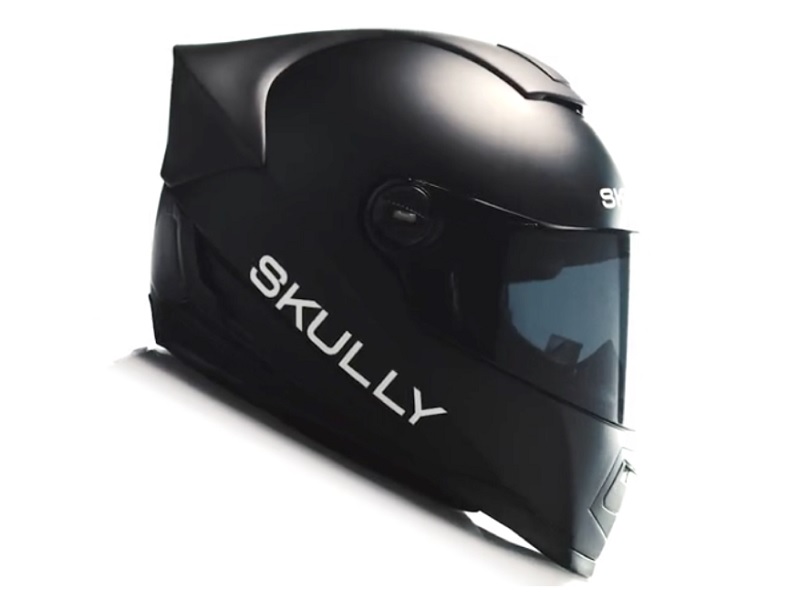
The “world’s smartest helmet” that never was. The Skully AR-1 is a famous helmet—or rather, it’s an infamous helmet. On paper, it had the potential to be one of the greatest motorcycle helmets ever made. But it just wasn’t mean to be.
It first appeared on the Kickstarter and IndieGoGo crowd-funding platforms in 2014. It sold itself as the world’s first helmet to integrate augmented reality technology. At the time, this promise was nothing less than revolutionary. It would use an integrated heads-up display, a rear-view camera, and GPS navigation to give riders an augmented riding experience. The display would show navigation, 180-degree rear views, and smartphone properties, all on a small screen in front of your face.
It was such an amazing idea that it attracted investors, big time. On IndieGoGo, the helmet raised more than a million dollars, followed by a further 11 million dollars with a Series A follow-up round of funding. But due to outrageous mismanagement, accusations of fraud, and very suspicious company expenses, only between 50 and 100 helmets ever shipped before the whole company collapsed in on itself.
In short: the Skully AR-1 promised everything, but ultimately delivered nothing. Nothing at all, in fact. It was an absolute failure. However, failures can still be icons. It may not have worked out. Units may never have been shipped. Money may never be refunded. But, the Skully debacle did put smart helmets with HUD displays and interconnectivity on the map, and as soon as other manufacturers saw the level of interest and demand that it generated, they got started engineering their own versions.
And that brings us to the present day. But what’s next? We will have to wait and see.

